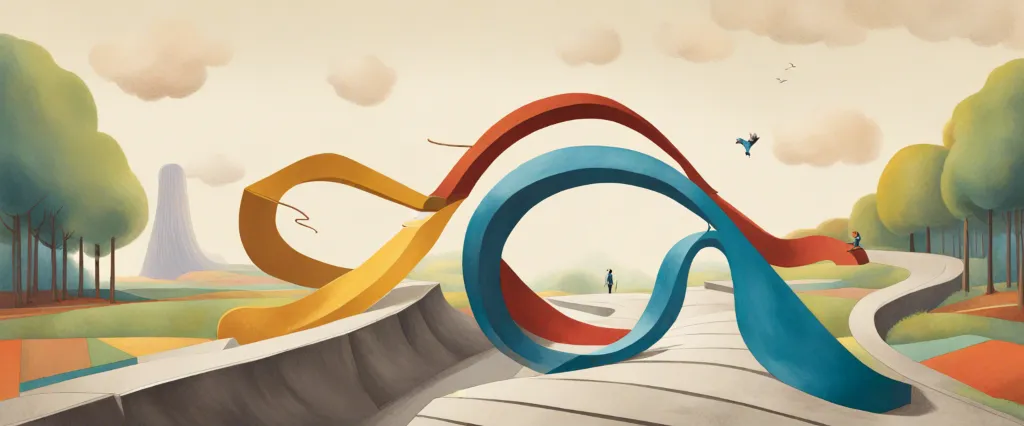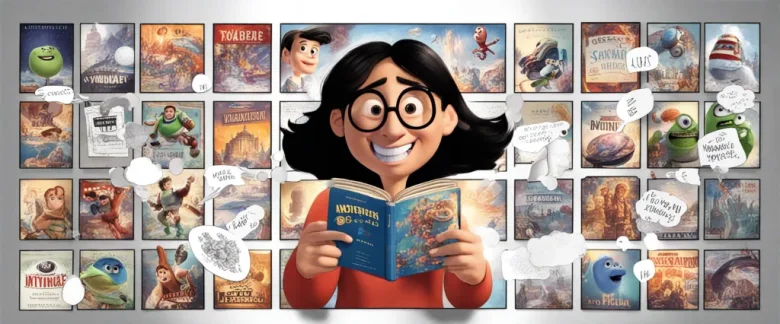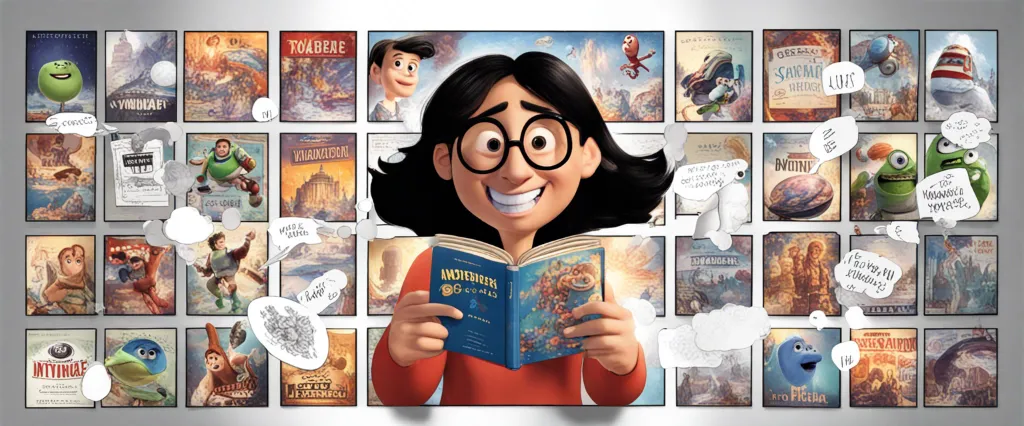In the captivating biography, “To Pixar and Beyond,” author Lawrence Levy invites readers on an enthralling journey behind the scenes of one of the most beloved animation studios in the world. Drawing from his own experiences as CFO during Pixar’s early years, Levy provides remarkable insights into the visionary minds of Steve Jobs, John Lasseter, and Ed Catmull, while sharing the remarkable tale of how this small, struggling computer company transformed into a revolutionary and iconic force in the entertainment industry. A Harvard-trained lawyer and former corporate attorney, Lawrence Levy’s profound commitment to mindfulness and compassion greatly influenced his role in shaping Pixar’s success, making him an ideal guide to unravel the triumphs and tribulations of this extraordinary adventure.
Chapter 1: The Road to Pixar
In Chapter 1 of “To Pixar and Beyond” by Lawrence Levy, the author takes us on a journey through the early stages of Pixar Animation Studios. The chapter is titled “The Road to Pixar” and focuses on the critical moments that led to the creation of the groundbreaking animation company.
Levy starts by introducing us to a young Steve Jobs in the midst of his success with Apple. However, Jobs was searching for a new venture after leaving Apple and came across an intriguing computer graphic technology company named Pixar. Levy dives into the initial deal between Jobs and George Lucas, the creator of Star Wars, who owned the group as a division of Lucasfilm.
As Levy recounts, Pixar was initially focused on developing computer hardware but soon faced immense financial challenges. This led to Jobs investing more and more of his personal wealth into the company. However, as Pixar struggled, it began to shift its focus towards creating short films and selling the hardware associated with them.
The turning point came when Levy joined Pixar as its CFO. He suggests that it was his financial expertise and strategic planning that ultimately saved the company. Levy was instrumental in negotiating new deals and partnerships, securing funding, and guiding Pixar towards profitability.
The chapter concludes with the creation of the short film “Tin Toy,” which won an Academy Award and put Pixar on the map as a pioneer in computer-generated animation. This success opened doors to collaborations with major studios and set the stage for the remarkable animation revolution that would follow.
In summary, “The Road to Pixar” introduces us to the early struggles, financial troubles, and pivotal moments that laid the groundwork for the eventual success of Pixar Animation Studios. It showcases the determination of Steve Jobs, the financial rescue by Lawrence Levy, and the creative breakthrough that propelled Pixar to become an industry giant in the world of animation.
Chapter 2: The Pixar Way
Chapter 2 of “To Pixar and Beyond” by Lawrence Levy dives into the challenges faced by Pixar in its early years and the strategies implemented by the company to overcome them.
The chapter begins with Pixar struggling to find its true identity. Initially a hardware company, it faced increasing competition in the computer animation field. However, Pixar gradually shifted its focus from hardware to software development, recognizing the potential in creating animated films. This led to a groundbreaking partnership with Disney, where Pixar would produce a series of films distributed by Disney.
Under the leadership of Steve Jobs and Ed Catmull, Pixar embraced a unique approach known as “The Pixar Way” to foster a creative environment. Central to this approach was the idea of a “Braintrust,” a group of individuals that provided candid feedback and shaped the creative direction of projects. This collaborative process allowed for open dialogue and constructive criticism, leading to stronger storylines and character development.
To overcome the financial strain, Pixar went public, its initial public offering proving successful due to the anticipation surrounding their first feature film, “Toy Story.” As the first entirely computer-animated feature film, “Toy Story” became a phenomenal success, solidifying Pixar’s position as a pioneer in the field.
The chapter also highlights the relentless efforts made by the Pixar team to push the boundaries of animation. They sought to create films that not only showcased the beauty and technical expertise of computer animation but also possessed compelling and emotionally resonant narratives.
In summary, Chapter 2 of “To Pixar and Beyond” highlights the transformative journey undertaken by Pixar, as it shifted its focus, formed crucial partnerships, and established a collaborative environment to create groundbreaking animated films. The chapter emphasizes the crucial role of “The Pixar Way” in fostering creativity and innovation, while also shedding light on their remarkable financial and artistic successes.
Chapter 3: The Toy Story Revolution
Chapter 3: The Toy Story Revolution of “To Pixar and Beyond” by Lawrence Levy delves into the challenges and breakthroughs Pixar faced in creating their first feature film, Toy Story. The chapter highlights the uphill battle that the company faced in trying to redefine the animation industry and secure a distribution deal for their revolutionary film.
Levy explains that Toy Story’s inception began with an ambitious idea by John Lasseter, Pixar’s creative genius. Lasseter envisioned a fully computer-animated film that would push the boundaries of storytelling and animation. However, despite their technological prowess, Pixar struggled to secure funding for the film. Traditional Hollywood studios were skeptical of the unproven concept and the lack of star power in the cast.
The chapter follows Pixar’s journey as they faced countless rejections and endured financial difficulties, ultimately leading to the fortuitous encounter between Steve Jobs, Pixar’s largest investor, and Disney’s CEO, Michael Eisner. Eisner recognized the potential of Toy Story and made a groundbreaking deal that would both finance the film and distribute it through Disney.
Levy details the challenges faced by the Pixar team in the subsequent development of Toy Story. The pressure to create a visually stunning and emotionally engaging film within a tight timeline was immense. The chapter highlights the collaboration between Lasseter and his team as they worked tirelessly to bring the beloved characters Woody and Buzz to life.
The chapter concludes with the release of Toy Story, which revolutionized the animation industry. Despite initial skepticism, the film received critical acclaim and solidified Pixar’s position as a leading animation studio. The success of Toy Story paved the way for future collaborations between Pixar and Disney, leading to a highly profitable relationship that would shape the entertainment industry for years to come.
In summary, Chapter 3 of “To Pixar and Beyond” recounts the challenges faced by Pixar in developing their first feature film, Toy Story, and their ultimate triumph in revolutionizing the animation industry. The chapter highlights the struggle to secure funding, the fortuitous deal with Disney, and the immense pressure to create a groundbreaking film. Ultimately, the release of Toy Story cemented Pixar’s place as an animation powerhouse and set the stage for future successes.
Chapter 4: Navigating the Disney Deal

Chapter 4: Navigating the Disney Deal of “To Pixar and Beyond” by Lawrence Levy explores the intricate negotiations and challenges faced by Pixar Animation Studios in their ultimately successful partnership with the media giant Disney.
The chapter delves into the early 1990s, a period when Pixar’s initial deal with Disney was coming to an end. While Pixar’s critically acclaimed early films had showcased their groundbreaking computer animation technology, the company faced financial struggles due to limited revenue streams. As Disney sought to extend their contract on unfavorable terms, Pixar executives, including Steve Jobs and Lawrence Levy, started exploring other options.
Levy details the tense negotiations and strategic decisions made during this period. Pixar had already begun diversifying by entering the toy industry, and Jobs saw the potential of their technology extending beyond entertainment. Concurrently, Jobs and Levy recognized the need for finding the right partnership to secure Pixar’s future.
The chapter then outlines the meeting between Jobs and Disney’s CEO, Michael Eisner. After a cordial start, the discussions encounter several stumbling blocks, including disagreements over profit sharing and the treatment of Pixar’s intellectual property. Eisner, underestimating the value of computer animation, dismisses Pixar’s proposal, unaware of the magnitude of their future success.
Despite these obstacles, Levy showcases Jobs’ determination and strategic finesse, revealing an unexpected partnership opportunity. Disney’s proposed acquisition of Capital Cities/ABC, pending regulatory approval, revealed a potential synergy between Disney’s existing assets and Pixar’s innovative technology. By leveraging this situation, Jobs persuades Eisner to pursue a partnership rather than an acquisition, leading to the eventual landmark deal between Pixar and Disney.
In summary, Chapter 4 of “To Pixar and Beyond” highlights Pixar’s challenges with contract negotiations and their search for an ideal partner. It demonstrates Steve Jobs’ ability to foresee possibilities and navigate complex discussions to secure a transformative deal, which would ultimately shape the future of animation and solidify Pixar’s place in the industry.
Chapter 5: Building a New Business Model
Chapter 5: Building a New Business Model of the book “To Pixar and Beyond” by Lawrence Levy focuses on the challenges and transformation that took place at Pixar during the mid-1990s. Under immense financial pressure, Pixar faced the realization that their original business model, which relied heavily on a technology licensing agreement with Disney, was not sustainable. This chapter explores how Ed Catmull, Steve Jobs, and Lawrence Levy worked together to find a new business model for Pixar.
The chapter opens with the company facing a financial crisis and layoffs. Catmull, Jobs, and Levy began assessing various strategies to secure Pixar’s future. They quickly realized that a new business model was required to maintain the company’s independence and creative autonomy.
Levy took the lead in renegotiating Pixar’s contract with Disney, aiming for a more equitable deal that would allow Pixar to leverage its own successes and minimize their dependence on Disney. With no precedents to rely on, Levy skillfully negotiated a deal that protected Pixar’s interests.
Simultaneously, Pixar announced that they would transition from being a hardware company to becoming a digital studio that produced computer-generated animated feature films. However, this shift required significant investment and risk. Jobs, Catmull, and Levy convinced investors to support them, securing the necessary funding to move towards their new business model.
The chapter concludes with Pixar’s first major success, “Toy Story.” The film not only exceeded expectations but also became the highest-grossing animated film at that time. This achievement validated the decision to pursue a new business model and demonstrated Pixar’s potential for creative excellence and commercial success.
In summary, Chapter 5 of “To Pixar and Beyond” portrays the difficult yet crucial transition Pixar underwent as they built a new business model. Through strategic negotiations with Disney and the shift from hardware to digital animation production, Pixar laid the groundwork for their future success with their groundbreaking film, “Toy Story.”
Chapter 6: The Challenges of Growth
Chapter 6 of the book “To Pixar and Beyond” by Lawrence Levy focuses on the challenges faced by Pixar during its early years. The chapter highlights the critical juncture the company reached as it approached a period of significant growth.
At the beginning of the chapter, Pixar was struggling financially. Despite the success of their short films and collaborations with Disney, the company was not yet generating a steady stream of revenue. They had a vision of creating the world’s first feature-length computer-animated film, but lacked the resources to make it a reality.
The chapter goes on to detail the numerous obstacles they faced in securing funding and gaining support for their ambitious project. They encountered skepticism from potential investors who doubted the feasibility of computer animation and were unwilling to take the risk. Their persistence eventually paid off when Steve Jobs, the co-founder of Apple, stepped in and became the majority shareholder of Pixar, injecting much-needed capital into the company.
Levy also examines the internal challenges Pixar encountered during this period. As the company expanded, it struggled to adapt to a more corporate structure, causing friction between creative individuals and management. Pixar’s unique culture, which valued artistic freedom and collaboration, was at risk of being compromised. The chapter showcases how the company navigated these challenges by fostering open communication and maintaining a strong sense of purpose.
In conclusion, Chapter 6 addresses the pivotal growth phase of Pixar and the various hurdles they overcame. It illustrates the importance of perseverance, financial support, and the need to balance creativity with a more structured organizational framework.
Chapter 7: Lessons in Leadership
Chapter 7: Lessons in Leadership of the book “To Pixar and Beyond” by Lawrence Levy explores the crucial leadership role played by Ed Catmull in the success of Pixar Animation Studios. This chapter focuses on three key lessons in leadership: cultivating a creative culture, embracing failure, and managing potential conflicts.
Catmull emphasizes the importance of creating a safe and collaborative environment where creativity can flourish. He encourages candid and open discussions, aiming to ensure that every employee feels comfortable sharing their ideas. He also stresses the significance of valuing talent, promoting diversity, and fostering an atmosphere of trust within the organization.
Additionally, Catmull recognizes the inevitability of failure in the creative process. He encourages employees to learn from their mistakes and view them as opportunities for growth. By openly discussing and analyzing failures, Pixar cultivates a culture of continuous improvement where innovation thrives.
In managing potential conflicts, Catmull emphasizes the importance of addressing issues head-on rather than avoiding them. He encourages open dialogue and constructive criticism, enabling problems to be resolved before they escalate. By nurturing healthy communication and empowering his team, Catmull fosters a culture of collaboration and respect.
Throughout the chapter, Levy highlights Catmull’s leadership skills as instrumental in Pixar’s success, fostering an environment that allows for constant innovation and creative excellence. Catmull’s leadership approach serves as a testament to the significance of creating a culture that values openness, learning from failures, and effective conflict management.

Chapter 8: The Legacy of Pixar
Chapter 8: The Legacy of Pixar in the book “To Pixar and Beyond” by Lawrence Levy highlights the impact and lasting legacy of Pixar Animation Studios. This chapter focuses on the period following Steve Jobs’s death and the challenges that lay ahead for the company.
The chapter begins by examining the remarkable success of Pixar under Jobs’s leadership. It discusses how Jobs’s commitment to quality and innovation, combined with the incredible talents of the Pixar team, led to groundbreaking films like Toy Story, Finding Nemo, and The Incredibles. The author also delves into the strategic partnerships and business deals that played a crucial role in Pixar’s growth and success.
However, after Steve Jobs passed away, the uncertainty about Pixar’s future began to surface. The chapter explores the internal struggles and doubts within the company as it faced the question of how to maintain its creative spirit and continue producing exceptional animated films. Lawrence Levy, the author himself, became instrumental in navigating this transitional period as the new Chief Financial Officer of Pixar.
Levy discusses the challenges of maintaining Pixar’s independence following the acquisition by The Walt Disney Company and the subsequent negotiations on a new distribution agreement. The chapter details the delicate balance between maintaining artistic integrity and meeting commercial expectations, as well as the importance of fostering a positive culture within the studio.
Ultimately, Chapter 8 underscores the lasting legacy of Pixar, both in terms of its groundbreaking technological advancements and its storytelling. It showcases how Pixar’s commitment to creativity and innovative thinking has not only revolutionized animation but also inspired future generations of filmmakers.
After Reading
In conclusion, “To Pixar and Beyond” by Lawrence Levy provides a captivating and insightful account of Pixar Animation Studios’ journey from a struggling technology company to a groundbreaking entertainment powerhouse. Levy’s role as CFO and his partnership with Steve Jobs demonstrate the immense challenges they faced, from financial struggles to creative tensions. Through strategic decision-making, innovative business practices, and an unwavering belief in the power of storytelling, Pixar ultimately redefined the animation industry. Levy’s narrative offers valuable lessons on leadership, resilience, and the importance of fostering a culture that values creativity and collaboration. Overall, “To Pixar and Beyond” is a compelling and inspiring read, highlighting the remarkable entrepreneurial spirit that turned an audacious vision into a legendary success.
1. “Creativity, Inc.: Overcoming the Unseen Forces That Stand in the Way of True Inspiration” by Ed Catmull with Amy Wallace
This book delves into the inner workings of Pixar Animation Studios and explores the principles and practices that foster creativity and innovation. Ed Catmull, the co-founder of Pixar, offers valuable insights into managing a creative organization and nurturing a culture that values and encourages the ideas of every employee.
2. The Lean Startup: How Today’s Entrepreneurs Use Continuous Innovation to Create Radically Successful Businesses” by Eric Ries
Similar to “To Pixar and Beyond,” this book focuses on the principles of entrepreneurship and innovation. Eric Ries outlines the lean startup approach, emphasizing the importance of being proactive, constantly experimenting, and embracing failure as a means to learn and grow.
3. “The Innovator’s Dilemma: When New Technologies Cause Great Firms to Fail” by Clayton M. Christensen
Clayton Christensen examines the challenges that successful companies face when disruptive technologies emerge. Drawing on a comprehensive study of various industries, he offers insights into how organizations can avoid being blindsided by innovation and adapt to disruptive changes.
4. Steve Jobs” by Walter Isaacson
Walter Isaacson’s biography of Steve Jobs provides an in-depth look at the co-founder of Apple, which was instrumental in the creation of Pixar Animation Studios. It explores Jobs’ unique approach to creativity, his pursuit of perfection, and the impact he had on both the technology and entertainment industries.
5. Originals: How Non-Conformists Move the World” by Adam Grant
In “Originals,” Adam Grant examines the habits and behavior of trailblazers who redefine industries and challenge the status quo. Through rigorous research, Grant unpacks the key characteristics of original thinkers and offers practical advice on how to champion new ideas and navigate the creative process.




